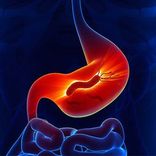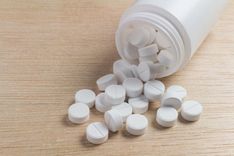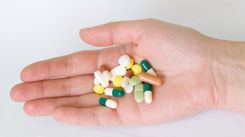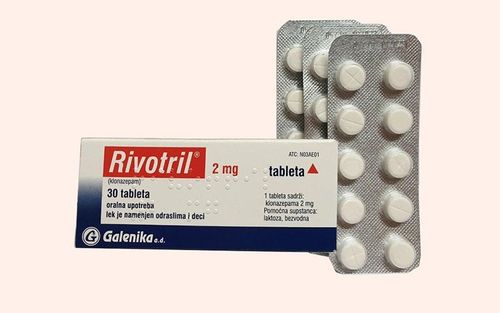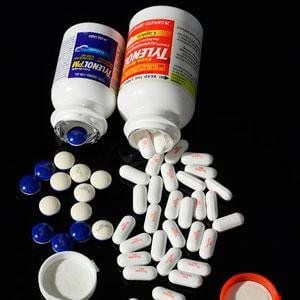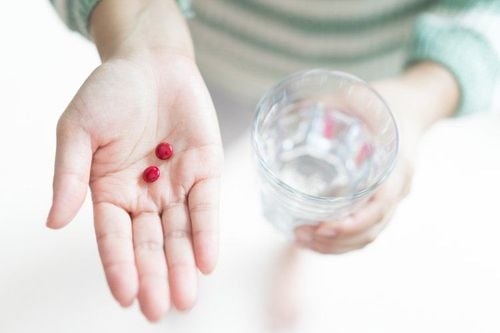Gabapentin is an active ingredient commonly used in combination with other medications to prevent and control focal seizures or to relieve neuropathic pain following shingles in adults. Although it is widely used due to its clinical efficacy, the exact mechanism of action of Gabapentin remains unclear.
1. What is Gabapentin used for?
Gabapentin is typically formulated in various forms such as capsules, hard capsules, oral solutions, and film-coated tablets, with the active ingredient being Gabapentin and other excipients suited for each specific formulation. Gabapentin comes in different strengths, including 100mg and 300mg, with 300mg being the most commonly used strength. So, what is Gabapentin 300mg used for?
Gabapentin is structurally similar to the neurotransmitter GABA (gamma-aminobutyric acid), but its mechanism of action is different from certain drugs that interact with GABA synapses, such as valproate, barbiturates, benzodiazepines, GABA transaminase inhibitors, GABA reuptake inhibitors, GABA receptor agonists, and GABA precursors. Gabapentin, at therapeutic doses, does not bind to brain neurotransmitter receptors such as GABAA, GABAB, benzodiazepine, glutamate, glycine, or N-methyl-D-aspartate (NMDA) receptors. It also does not interact with sodium channels, which makes its mechanism distinct from drugs like phenytoin and carbamazepine. Thus, Gabapentin does not directly affect GABA receptors, nor does it alter GABA structure, release, metabolism, or absorption.
Gabapentin is an anticonvulsant and neuropathic pain reliever, though its precise mechanism of action is not fully understood. In animal studies, it has been shown to prevent muscle rigidity after electric shock and inhibit seizures induced by pentylenetetrazol.
2. What does Gabapentin treat?
- Epilepsy: Gabapentin is indicated as monotherapy for focal seizures with or without secondary generalized seizures in adults and children aged 12 years and older. Its safety and efficacy for monotherapy in children under 12 years have not been established.
- Gabapentin is used as an adjunctive treatment for focal seizures with or without secondary generalized seizures in adults and children aged 3 years and older. Its safety and efficacy in children under 3 years have not been established.
Gabapentin is used to treat neuropathic pain (e.g., postherpetic neuralgia, diabetic neuropathy) in adults aged 18 years and older. Its safety and efficacy in individuals under 18 years have not been established. - Not effective in absence seizures.
3. Dosage and Administration:
3.1 Gabapentin for Seizure Treatment:
Gabapentin is taken orally, with or without food. For adults and children over 12 years old:
- Day 1: 300mg once daily
- Day 2: 300mg twice daily
- Day 3: 300mg three times daily
Alternatively, start with 300mg three times daily and increase the dose by 300mg (divided into three doses) every 2–3 days based on the patient's response, up to a typical range of 900–3600mg/day, divided into three doses. The maximum dose is 4800mg/day, and the total daily dose should be divided into three equal doses, with a maximum interval of 12 hours between doses to avoid seizures.
For patients with kidney impairment or those undergoing dialysis, the dose should be adjusted based on creatinine clearance (Clcr), as follows:
- Clcr 50–79 ml/min: 600–1800mg/day, divided into 3 doses
- Clcr 30–49 ml/min: 300–900mg/day, divided into 3 doses
- Clcr 15–29 ml/min: 300–600mg/day, divided into 3 doses, taken every other day
- Clcr < 15 ml/min: 300mg/day, divided into 3 doses, taken every other day
- Hemodialysis patients: Initial dose is 300–400mg, followed by 200–300mg every 4 hours during dialysis. Gabapentin should not be taken on non-dialysis days.
For children aged 2–6 years: Day 1: 10mg/kg once daily; Day 2: 10mg/kg twice daily; Day 3: 10mg/kg three times daily, then increase the dose gradually based on the child's response to reach a typical dose of 30–70mg/kg/day, divided into 3 doses.
For children aged 6–12 years: Day 1: 10mg/kg (max 300mg) once daily; Day 2: 10mg/kg (max 300mg) twice daily; Day 3: 10mg/kg (max 300mg) three times daily. Typical dose: 25–35mg/kg/day, divided into 3 doses. Maintenance dose: 900mg/day for children weighing 26–36kg and 1200mg/day for children weighing 37–50kg. Maximum dose: 70mg/kg/day, divided into 3 doses.
3.2 Gabapentin for Neuropathic Pain:
For adults: Day 1: 300mg once daily; Day 2: 300mg twice daily; Day 3: 300mg three times daily, then increase the dose gradually by 300mg (divided into three doses) every 2–3 days, based on patient response, until the effective dose is achieved, with a maximum dose of 3600mg/day.
4. Overdose:
Toxicity in life-threatening doses has not been reported with Gabapentin, even at doses up to 49g. Symptoms of overdose may include dizziness, double vision, slurred speech, drowsiness, and mild diarrhea. All symptoms generally resolve completely with supportive treatment. The reduced absorption of Gabapentin at high doses at the time of overdose helps minimize toxicity. While Gabapentin can be removed by hemodialysis, this is typically not necessary except in cases of severe renal impairment.
5. Contraindications:
Gabapentin is contraindicated in patients who are hypersensitive to Gabapentin or any of the components of the drug.
6. Side effects of Gabapentin
Gabapentin is well tolerated, and side effects are generally mild or moderate, tending to decrease within 2 weeks of continued treatment.
Common side effects of Gabapentin include:
- Loss of coordination, nystagmus, dizziness, edema, drowsiness, memory loss, children aged 3 to 12 years may experience neurological issues such as anxiety, behavioral changes (crying, euphoria or depression, agitation, defiance, etc.);
- Indigestion, dry mouth, constipation, diarrhea;
- Peripheral edema;
- Rhinitis, sore throat, cough, pneumonia;
- Double vision, visual impairment;
- Muscle pain, joint pain;
- Itching, skin rash;
- Leukopenia;
- Impotence, viral infections.
Less common side effects of Gabapentin include:
- Memory loss, aphasia, depression, irritability, decreased or loss of libido, headaches;
- Digestive issues, stomatitis, loss or distortion of taste;
- Hypotension, angina, palpitations;
- Others: Weight gain, hepatomegaly.
Rare side effects of Gabapentin include:
- Nerve palsy, increased libido, decreased motor function, psychiatric disorders, personality disorders;
- Peptic ulcers, esophagitis, colitis/rectitis;
- Cough, hoarseness, respiratory tract infections, reduced pulmonary ventilation, pulmonary edema;
- Eye irritation, lacrimation, retinal disorders, uveitis;
- Cartilage inflammation, osteoporosis;
- Leukopenia;
- Fever or chills;
- Stevens-Johnson syndrome.
7. Drug interactions with Gabapentin
- Gabapentin does not affect the pharmacokinetics of other commonly used anticonvulsants such as carbamazepine, phenytoin, valproic acid, phenobarbital, diazepam;
- Antacids containing aluminum and magnesium can reduce the bioavailability of Gabapentin by 20% due to absorption interference, so Gabapentin should be taken at least 2 hours after antacids;
- Morphine reduces Gabapentin clearance, so when using both drugs together, central nervous system symptoms should be monitored, and the dose should be adjusted accordingly.
- Cimetidine reduces Gabapentin renal clearance.
8. Caution when using Gabapentin
- Gabapentin should be used with caution in patients being treated with or starting any anticonvulsant medication, as depression or worsening of depression, suicidal thoughts, or unusual mood changes may occur. Patients should be closely monitored, and they should not alter the treatment regimen without consulting a healthcare provider.
- Anticonvulsants like Gabapentin should not be discontinued abruptly, as this may increase the risk of seizures. Discontinuation of Gabapentin and/or the addition of another anticonvulsant should be done gradually over at least one week.
- Caution should be exercised when using Gabapentin in patients with a history of psychiatric disorders, those with renal impairment, patients undergoing dialysis, or individuals who drive or operate machinery.
- Gabapentin may cause a false positive result on urine protein tests.
- Gabapentin causes fetal abnormalities in rodents; however, no such effects have been observed in humans. It should only be used in pregnant women when absolutely necessary, after carefully considering the benefits and risks to the fetus.
- Gabapentin is excreted in breast milk, and should only be used in breastfeeding women when absolutely necessary, after careful consideration of the risks and benefits.
Gabapentin is a commonly used agent in combination with other medications to prevent and control partial seizures or to reduce postherpetic neuralgia in adults. To ensure effective treatment and avoid side effects, patients should use the drug as directed by their physician or pharmacist.
Please visit the Vinmec International Hospital website for more health, nutrition, and beauty information to protect the health of you and your loved ones.
To arrange an appointment, please call HOTLINE or make your reservation directly HERE. You may also download the MyVinmec app to schedule appointments faster and manage your reservations more conveniently.

